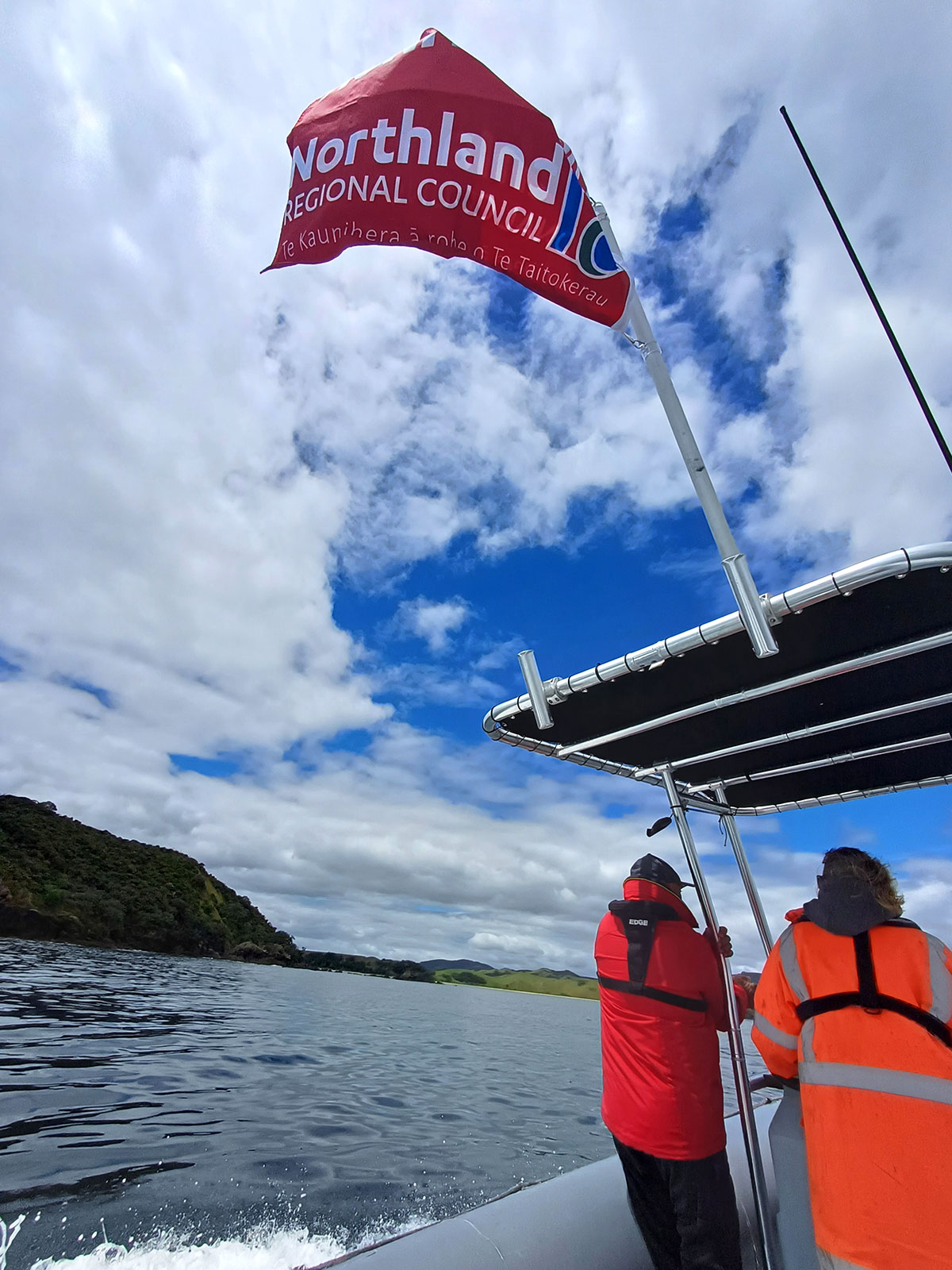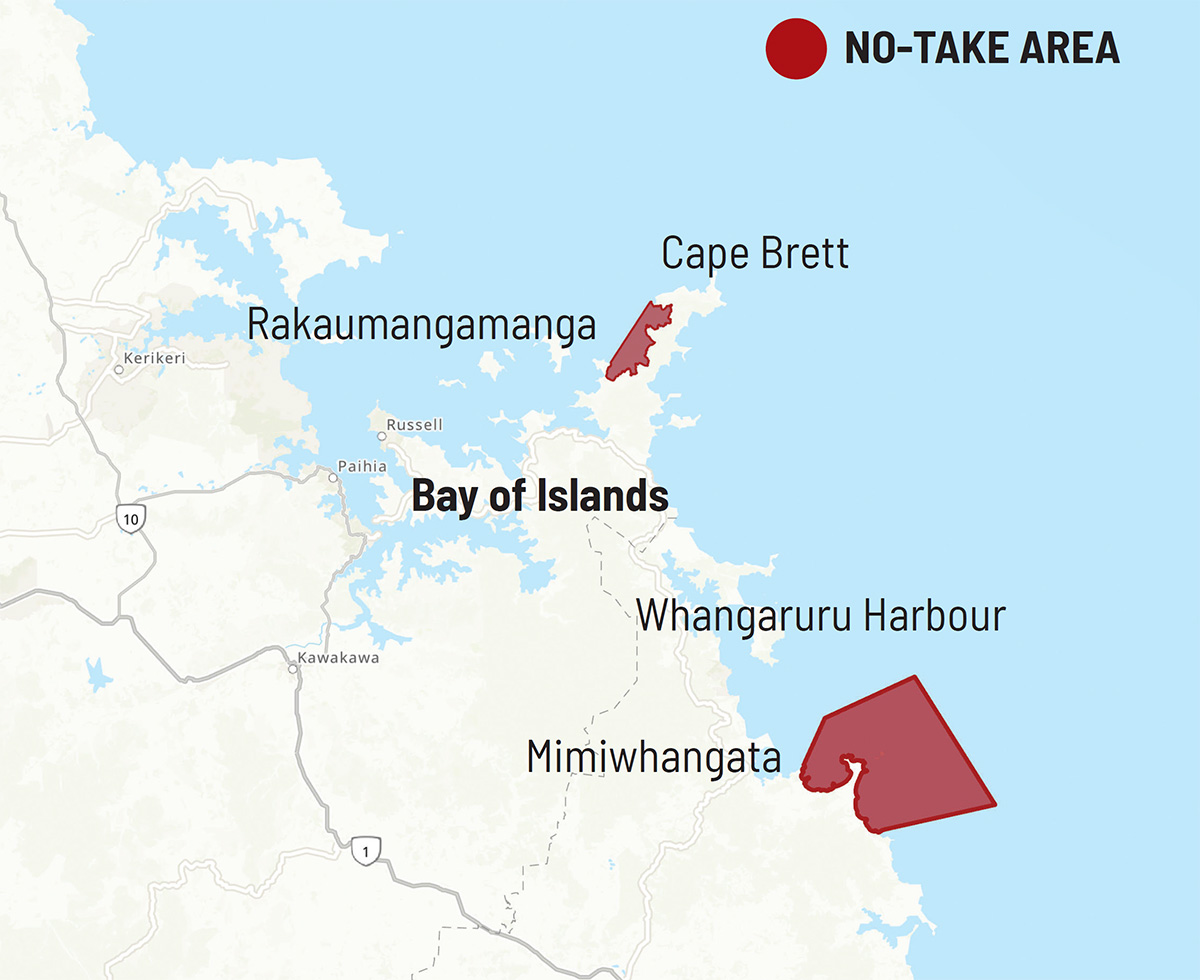Story
Summer patrols to protect sensitive marine areas
Northland Regional Council is partnering with local hapū to protect rāhui tapu marine protected areas in Rākaumangamanga and Mimiwhangata with new warranted officer surveillance patrols.
Patrol boats will be out on the water most days throughout the summer holiday period.
Northland Regional Council Chair Geoff Crawford said the patrols would be carried out by specially recruited and trained RMA warranted officers alongside kaitiaki from local hapū Te Uri O Hikihiki ki Whangaruru, Te Whanau Whero ki Whananaki, and the hapū of te Rāwhiti, Ngāti Kuta and Patu Keha.
“By nurturing and caring for our moana using regulated protections, we can maintain a vibrant and thriving marine ecosystem for generations to come,” said Matua Bob Clarke of Patu Keha.
Chair Crawford urged commercial and recreational fishers alike to help protect the sensitive ecosystems around Rākaumangamanga and Mimiwhangata by respecting the no-take rules.
“The marine ecosystems in these areas are in trouble,” he says.
“Tipa/scallop populations have collapsed, kūtai/green lipped mussel beds have disappeared, hāpuku numbers have significantly reduced, and we’re seeing kina barrens resulting from the decrease in tāmure/snapper and kōura/crayfish.”

A patrol out on the water in one of the rāhui tapu marine protected areas.
“No-take marine protected areas are the most effective tool we have to restore ecosystems and fish populations to a more resilient state. But we need the community’s support.”
The rāhui tapu marine protected areas are in place around the Mimiwhangata peninsula (Mimiwhangata Rāhui Tapu) and from Maunganui Bay (Deep Water Cove) to Opourua (Oke Bay) in the Bay of Islands (Rākaumangamanga Rāhui Tapu).
No fishing or diving for seafood is permitted in these areas. Exceptions to the no-take rules include kina harvest and activities associated with restoration, research and tikanga such as customary fishing.
Chair Crawford said the public could support the patrols by reporting breaches of the no-fishing rules.
“We can use the information we get from people reporting breaches to help officers target the problem areas, as well as taking direct enforcement action where appropriate,” he said.
In November, a report by an off-duty council contractor led to a commercial fishing boat being served with an abatement notice after it was seen with its fishing gear engaged 250 metres inside the boundary of the Rakaumangamanga Rāhui Tapu marine protected area.
Other compliance measures available under the Resource Management Act range from fines of several hundred dollars for breaking the rules or not providing information to a warranted enforcement officer through to imprisonment for up to two years or a fine up to $300,000 for an individual, or $600,000 for an organisation.
To report a breach of the no-fishing rules, view the boundaries, or find further information about the regulations, visit www.nrc.govt.nz/marineareas Boundary co-ordinates are also available on MarineMate, Navionics, and Fisheries NZ boating applications.

No-take areas in place around Mimiwhangata and Rakaumangamanga.
